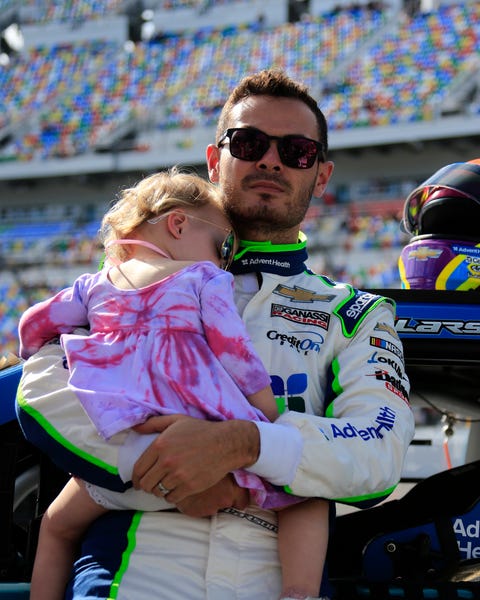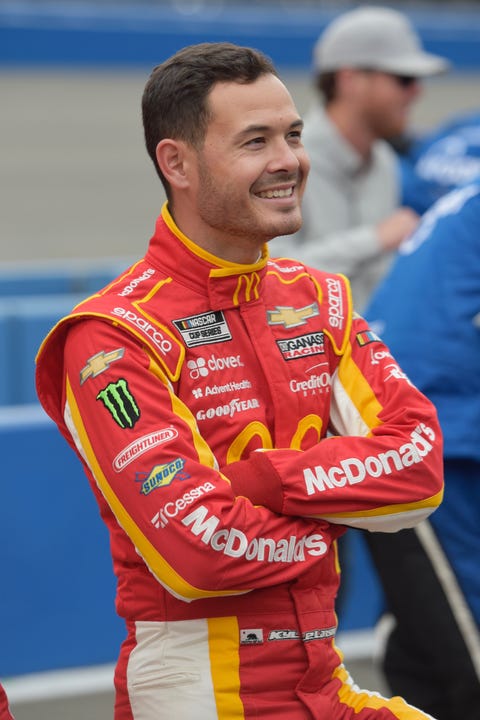There is a path to redemption for Kyle Larson following his release from Chip Ganassi Racing on Tuesday, but that means reaching some difficult truths about what happened in the first place.
And that means all of us.
First and foremost, everyone needs to understand that the N-word historically has been a vicious weapon to be used against black people—especially when used with the hard “R.” Unless you are black, you are not allowed to have a say in the arbitration of that word.
It doesn’t matter where it is used in popular culture, and it doesn’t matter where else you may have heard it.
Under the impression he was on a private channel, Larson used a word universally understood as the one he absolutely should not have said on Sunday while participating in an unofficial iRacing event. And that is what makes it worse.
It was the cavalier and effortless nature in which Larson used the word that indicated it as a possible pattern that needs to be addressed. It was no accident. It was a choice, and there were consequences for those actions.
Chip Ganassi Racing released Larson from his contract on Tuesday morning following the termination of his sponsorship agreements with McDonald’s, Credit One Bank and Clover. He has been indefinitely suspended by NASCAR and must undergo sensitivity training.
Once considered a leading candidate to replace Jimmie Johnson in the No. 48 at Hendrick Motorsports or join Stewart-Haas Racing, Larson is now at risk of never turning a competitive lap at the highest level ever again. More importantly, he finds himself at a personal crossroads as a human being, and everyone reading this would be wise to go on that journey with him.
The damage done within a single second on a microphone goes well beyond Kyle Larson and what was poised to be a lucrative free agency process this summer. Larson set the perception of an entire sport back countless years, if not a full decade.
Not just NASCAR, but the sport of stock car racing.
The NASCAR industry has worked tirelessly to make its events more inclusive, not only in the garage, but well beyond it. This hasn’t been a perfect process, but where there used to be push against inclusion there is now a push toward it.
With his Japanese heritage, Larson himself is a graduate of the NASCAR Drive for Diversity, a driver development program designed to provide a path to the highest levels for those who strive toward it.
That background is also true for Bubba Wallace, just the second black driver to ever win a NASCAR national touring race behind the trailblazing Wendell Scott.
The garage area now features some of the best athletes in the world, regardless of race or gender, many of them making a transition from other professional sports to NASCAR. The sanctioning body features a diverse leadership group with women and minorities having earned executive positions.
And yet, no matter how much progress is made on each of those fronts, the perception remains that NASCAR is still a safe place for racism, bigotry and discrimination. No other professional sporting event has a higher per capita ratio of Confederate flags than a NASCAR national touring event—especially in the Deep South, the birthplace of America’s Original Sin.
“Of course, it was a NASCAR driver,” one national sporting pundit said on air when discussing the firing of Larson on Tuesday morning.
For the most part, the national mainstream media does not see the legitimate, but far from adequate, progress being made on diversity. They have instead aired clips from fans at Darlington and Talladega who refused to exchange their Confederate flags for Old Glory. They will highlight the struggles of Scott and Willy T. Ribbs. They will point to the singular black driver, Wallace, to have raced full time in the Cup Series over the past 40 years.
That was the damage done to stock car racing on Sunday, and why the consequences for Larson were so severe.
By all accounts and every interaction, Larson is a genuinely good guy. It surely wasn’t malice that led to him using that word on Sunday, but it was ignorance. And in the aftermath of his firing, there has been far too much justification and tolerance of that ignorance.
Before Larson can even begin to reassess his professional career, he will be forced to undergo sensitivity training. Hopefully, he will begin to understand why his actions were damaging, not just to the sport in which he plies his trade but to an entire community of people, many who classify themselves as his fans.
For Larson to be accepted back, a seemingly sincere and contrite apology video isn’t going to be enough. Larson needs to open up about what he is about to learn, and we need to go there with him. We should all strive toward empathy for those we do not understand or have different backgrounds from us.
There is a version of this story that ends with Larson back at the highest levels, chasing wins and championships after having become a more understanding person through this process.
Here’s to hoping we all took something from it.

Source: Read Full Article



